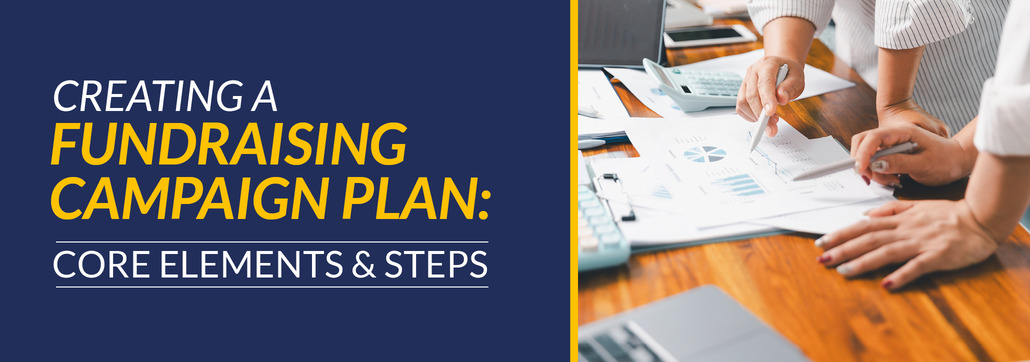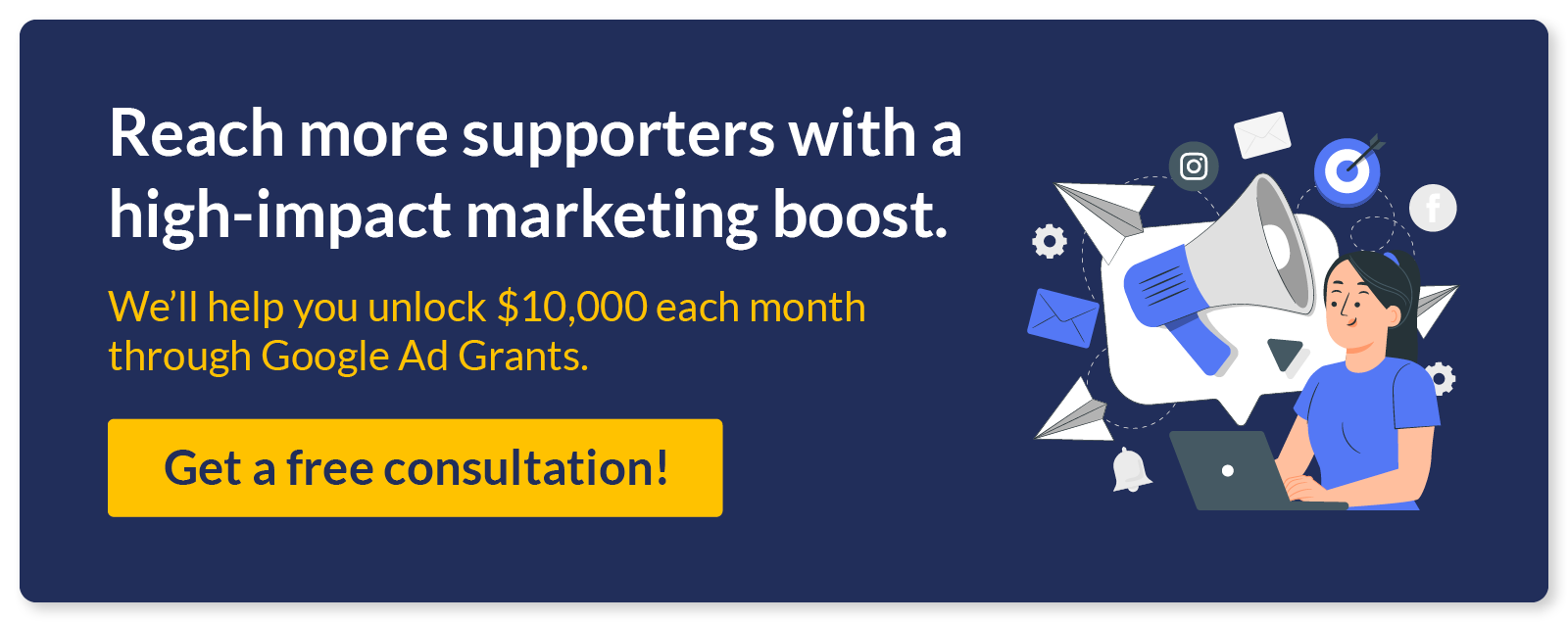Creating A Fundraising Campaign Plan: Core Elements & Steps
Picture this: you know a big fundraising push is on the horizon. You have a passionate team and an optimized donation page, but a sense of uncertainty is holding you back. How do you channel that energy into a campaign that truly connects with donors and brings in donations?
The answer is a clear and actionable fundraising campaign plan. Brainstorming ideas is the fun part, but planning a fundraising campaign thoroughly is what separates wishful thinking from tangible results. Understanding the core elements of a fundraising plan transforms an overwhelming task into a step-by-step process. To help you craft a stellar approach, we’ll cover the following topics:
- What Is a Fundraising Campaign Plan?
- The Core Elements of a Fundraising Plan
- How To Create Your Fundraising Campaign Plan
- Tools That Will Make Your Fundraising Campaign Plan Possible
Don’t worry if you’re working with a small team or a tight budget. With the right strategies, you can design a donor-centric campaign that will empower you to reach your fundraising goals. Let’s get started.
What Is a Fundraising Campaign Plan?
A fundraising campaign plan is a strategic document that serves as a blueprint for a specific fundraising initiative. It details every aspect of your campaign, from the initial goals to the final donor thank-yous.
Think of it as your roadmap to success. It outlines:
- What goals you want to achieve
- Who you need to reach
- How you will reach those supporters
- When key campaign activities will happen
- How much the various elements of your fundraising campaign will cost
Essentially, a fundraising campaign plan transforms your abstract ideas into a concrete, actionable strategy that keeps your team on the same page and every effort purposeful. By creating a strong plan, you can host a campaign that establishes a reliable donation pipeline, reaches new audiences, and fosters stronger relationships with donors.
The Core Elements of a Fundraising Plan
Before diving into the step-by-step process of building your campaign, take the time to understand the core elements that form the foundation of a successful fundraising plan. Think of it as your campaign’s living playbook. It’s a guide that tells the story of what you’re going to do, why it matters, and exactly how you’ll succeed.
While every plan is unique, the most effective ones cover these key areas:
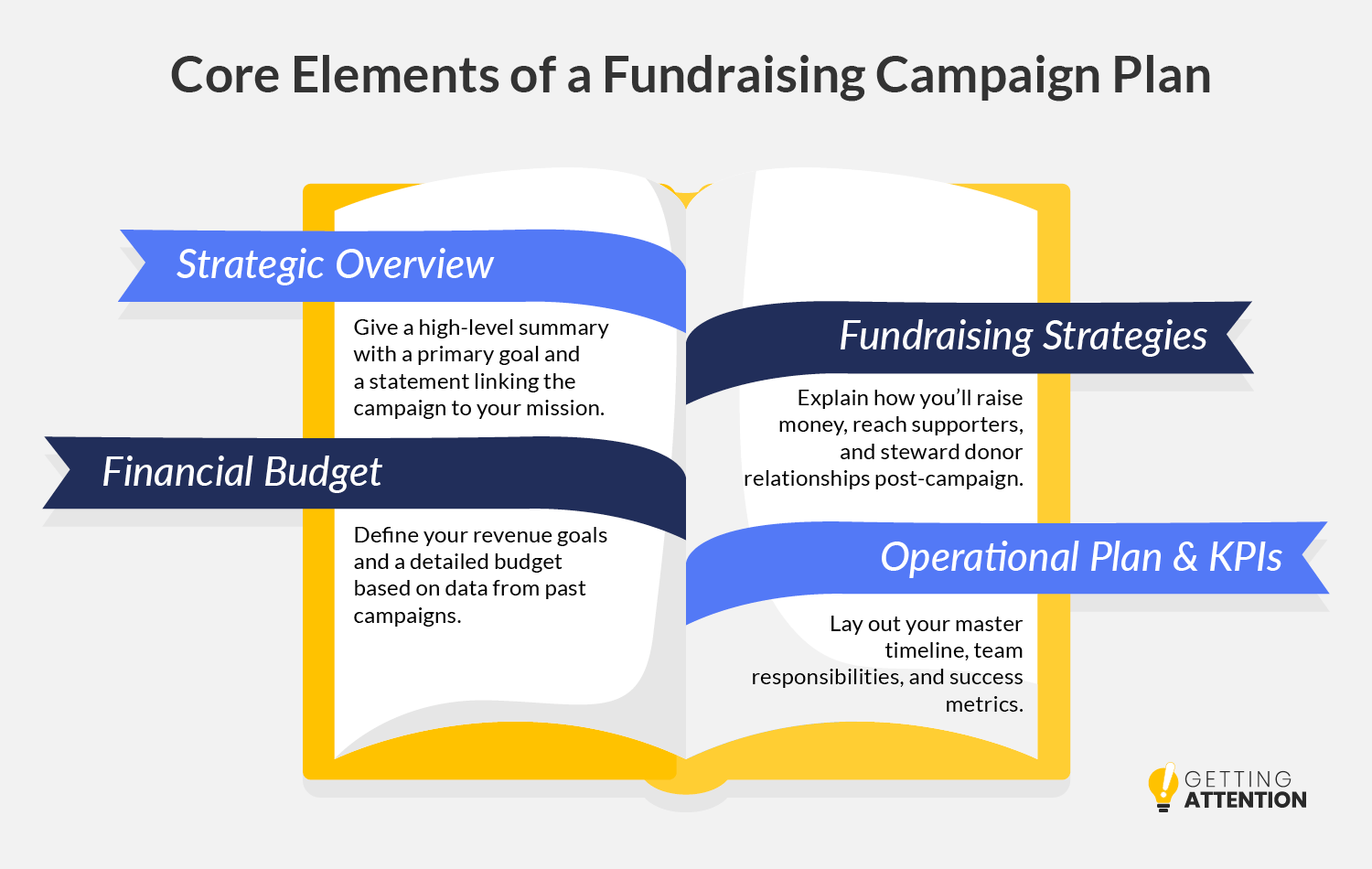
1. Executive Summary & Strategic Overview
Your plan should start with a clear, high-level summary. This is the “at-a-glance” view that quickly gets everyone on the same page, connecting your campaign efforts directly to your mission. Include these elements:
- Mission Connection: A brief statement linking the campaign to your organization’s core purpose
- Fundraising Goals: The primary, measurable outcome you want to achieve (e.g., “Raise $50,000 by year-end“)
- Executive Summary: A concise paragraph summarizing the entire plan for board members and key stakeholders
2. Financial Framework & Budget
This section details the financial engine of your campaign. It provides a realistic, data-informed look at the costs and potential returns, ensuring your goals are financially sound. You’ll want to define the following:
- Revenue Goals: Specific financial targets broken down by income stream (e.g., major gifts, online donations, grants)
- Detailed Budget: A list of anticipated expenses for all fundraising activities, from marketing costs to event logistics
- Past Performance: An analysis of previous campaigns to inform your financial projections
3. Fundraising Strategies
This is the heart of your plan that outlines how you will raise the money. It highlights the methods you’ll use to connect with supporters and inspire them to give, as well as how you’ll nurture those relationships afterward. Be sure to include these elements in your fundraising campaign plan:
- Case for Support: The compelling, emotional narrative explaining the need and the impact of a donation
- Target Audience: A clear definition of your target supporters and donor segments, like major givers or first-time supporters
- Fundraising Channels: The mix of outreach methods you’ll use, such as email, social media, events, or direct mail campaigns
- Donor Stewardship Plan: A clear strategy for providing prompt, heartfelt thank-yous and reporting on impact, which is key to retaining donors
4. Operational Plan & Performance Metrics
This part of your fundraising campaign plan covers the logistics—the who, when, and how of executing your plan. It ensures your strategy is actionable and that you have a clear way to measure success. Be sure to lay out these components:
- Master Timeline: A calendar of key dates, from the quiet planning phase to the final report
- Team Roles & Responsibilities: Clearly assigned tasks so every staff member and volunteer knows what they should be doing
- Success Metrics: The specific key performance indicators (KPIs) you’ll track, like fundraising totals or donor acquisition cost
How To Create Your Fundraising Campaign Plan
With a clear picture of the core elements of a fundraising plan, let’s shift from what to how. Putting your plan on paper helps turn your campaign ideas into reality. We’ve outlined the entire process below to help you create a detailed and effective fundraising campaign plan from scratch. Follow these steps to build your roadmap:
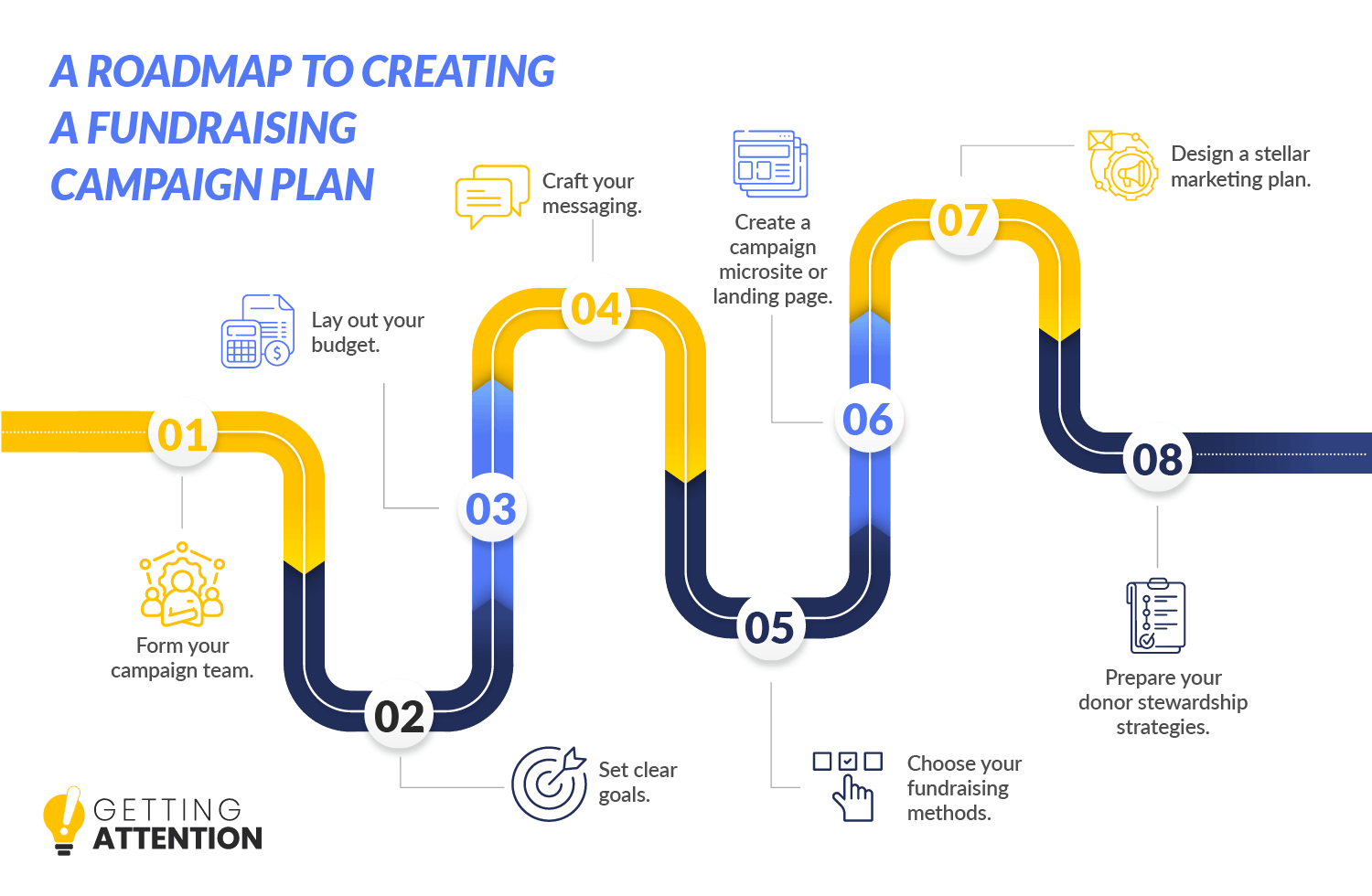
1. Form your fundraising campaign team.
Successful fundraising is a collaborative effort, not a solo mission, so a strong plan starts with getting the right people in the room from day one.
Your campaign team should be cross-functional, bringing together different perspectives and skills to ensure every aspect of the campaign is covered. Aim to include representation from the following areas:
- Fundraising Lead: The project manager is responsible for guiding the strategy and tracking progress toward your goals.
- Marketing & Communications: These outreach experts will craft the messages, run social media, design visuals, and get the word out.
- Program Staff: Employees are on the front lines and can provide the powerful stories of impact that will inspire your donors.
- Leadership: Your executive director or a board member can provide high-level support and help with major donor outreach.
- Key Volunteers: Passionate supporters can extend your reach, help with events, and act as campaign ambassadors.
This team will be your engine for brainstorming, execution, and accountability throughout the campaign.
Your first action item: Schedule a campaign kickoff meeting to bring this group together, discuss the initial vision, and start brainstorming your goals.
2. Set clear goals.
To give your nonprofit direction as you plan your fundraising campaign, you need to set SMART goals. Using this goal-setting framework will help create a clear picture of what you want to achieve. For example, let’s say one of your nonprofit’s primary goals is to expand your reach and attract new donors. Here’s what this goal could look like as a SMART goal:
- Specific: Promote the campaign to new audiences by posting on social media three times a week with targeted hashtags and contests.
- Measurable: Increase our donor acquisition rate by 10%.
- Attainable: This 10% goal is achievable, considering that our less frequent social media efforts previously yielded a 5% increase.
- Relevant: Acquiring new donors helps us reach our current fundraising goal and expands our long-term supporter base.
- Time-bound: Start posting on social media about our upcoming campaign two weeks before it starts, and reach our 10% increase in donor acquisition by the end of the campaign.
At this point, lay out the timeline for your campaign to rally your team around your goals!
Your goals will also help you pick the right type of fundraising campaign for your nonprofit. For example, if your goal is to expand your donor network, try a peer-to-peer fundraising campaign. Or, if you’re looking to increase visibility for your mission, an awareness campaign is a great option. Aligning your goals with the right type of fundraising campaign will make it more likely that you’ll see them through.
3. Lay out your fundraising campaign budget.
To raise money, you have to spend money! A clear budget helps you earn more than you spend. Your budget should map out your expected revenue and anticipated expenses.
Start by listing all potential costs required to run the campaign. This helps you understand the investment needed and calculate your potential return. Common expenses to consider include:
- Marketing and Advertising: Costs for digital ads or printed materials
- Software and Technology: Fees for your online donation platform, email marketing service, or peer-to-peer software.
- Event Costs: Venue rental, catering, or virtual event platform fees (if applicable)
- Processing Fees: Credit card and payment processing fees for donations
- Staff Time: The cost of staff hours dedicated to executing your fundraising campaign plan
Tallying these expenses gives you a clear picture of the total investment needed for your campaign. This leads to more strategic decisions and smarter use of your nonprofit’s resources.
4. Craft your messaging.
Now it’s time to develop compelling messaging that will inspire supporters to give. Defining your core message helps outreach be clear, compelling, and consistent across all communications. The elements of your campaign’s message should include:
- Your Nonprofit’s Branding: Use your nonprofit’s brand voice, colors, and logo across all campaign materials. This builds trust and instantly shows supporters that the campaign is authentically yours, making it more likely they will engage.
- Storytelling: Frame the urgent problem you’re solving through the lens of a single, impactful story about a person, animal, or community you’ve helped. This creates an emotional connection and demonstrates the tangible change that donations make possible.
- A Clear Call to Action (CTA): Tell supporters exactly what action to take next, such as “Donate $25 today.” Create a sense of urgency and encourage immediate giving with time-bound language like “Donate by midnight to have your gift matched!”
Try to speak to your target audience’s interests and values to make your communications more powerful. Also, remember to keep your messaging consistent across all channels and adapt the formatting to fit each platform’s features. For example, an in-depth story you share in your email newsletter could be adapted into a short, emotional video for social media.
5. Choose your fundraising methods.
As you craft your fundraising campaign plan, define how you’ll collect donations. Aim to make giving easy! Providing supporters with multiple, convenient ways to give will maximize your campaign’s success.
Your central collection point will likely be a dedicated online donation page on your website. This is where you’ll direct all digital traffic. To expand your reach, you can incorporate peer-to-peer fundraising, empowering your passionate supporters to raise funds from their friends and family members. For in-person or virtual events, a text-to-give service provides a fast and engaging way for attendees to contribute in the moment. Don’t forget traditional methods like direct mail for those who like offline donation methods.
6. Create your fundraising campaign microsite or landing page.
All your marketing efforts should point to a single, dedicated online page or a separate microsite for your campaign. A focused landing page eliminates distractions, gives a clear overview of your campaign, and makes it easy for supporters to donate.
To be effective, your landing page or microsite should include:
- A clear headline that matches your campaign’s core message
- A fundraising thermometer or goal tracker to show progress and build momentum
- A countdown clock or campaign deadline to create urgency
- Key event details (date, time, location) if the campaign is tied to an event
- A simple, mobile-friendly donation form with a prominent call-to-action button
- Clear impact statements (e.g., “$25 can provide…”) to motivate giving
Combining these elements creates a clear, urgent, and compelling destination for your campaign. Think of this page as the central hub for converting interest into action. It’s the critical link between your marketing efforts and your fundraising goal.
7. Design a stellar marketing plan.
Your new landing page is the destination, and your marketing plan is the roadmap that guides supporters there! Your marketing plan should coordinate your promotional efforts across multiple channels, like your email newsletter, social media, texting, paid ads, and direct mail.
You’ll want to define which channels you’ll use and create a timeline for when messages will go out. The goal is to build and sustain momentum for your fundraiser.
One of the most powerful platforms for promoting fundraisers is Google Ads. You can invest in paid search ads that promote your campaign and reach supporters who are actively searching for causes like yours. Here’s an example of an ad from the World Wildlife Fund (WWF) promoting their efforts to protect endangered species:
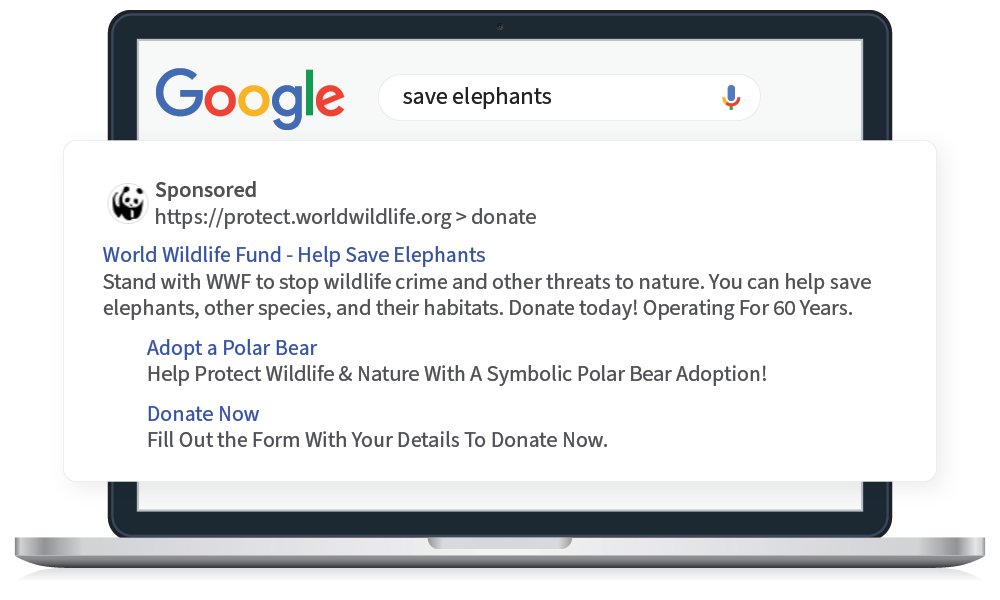
Focus on creating simple, compelling ads that target keywords related to your mission (e.g., “donate to Alzheimer’s research” or “environmental charities in Georgia”). Make sure every ad links directly to your new campaign landing page. This strategy drives highly motivated traffic to your campaign, capturing supporters who intend to give. As a bonus, many nonprofits are eligible for free advertising through the Google Ad Grants program, which we’ll explore later.
8. Have your donor stewardship strategies ready.
Don’t wait until the campaign is over to think about saying thank you! Crafting your nonprofit’s donor stewardship efforts in advance ensures every donor feels appreciated promptly, which is critical for retaining their support.
When planning your fundraising campaign, prepare an automated thank-you email and receipt, have a plan for personal outreach like phone calls for larger gifts, and schedule a follow-up communication to share the campaign results and show donors their collective impact.
Tools That Will Make Your Fundraising Campaign Plan Possible
A great fundraising campaign plan is your roadmap, but you still need the right vehicle to reach your destination. While strategy is essential, the right technology is what powers your execution. Investing in platforms that bring all your efforts together—from online giving to marketing and reporting—can turn your stellar plan into a successful reality.
Consider investing in an all-in-one fundraising solution that provides your nonprofit with everything it needs to plan and execute fundraisers of all types and formats. You may also need to supplement your main platform with specialized one-off solutions for specific needs, like advanced email marketing or advertising.
Here are some tools to consider purchasing when planning a fundraising campaign:
Online Fundraising Tools
Your software should empower your nonprofit to create and customize online donation forms, develop a branded fundraising microsite in just moments, and drive giving with built-in gamification tools. Backed by these features, you can create a seamless online giving experience that will allow donors to give to your campaign anywhere and anytime.
Event Management
You might pair your fundraiser with an exciting in-person, online, or hybrid event. Look for a fundraising solution that helps your nonprofit host live streams, manage RSVPs, and facilitate simple event check-in and out with mobile tools.
Peer-to-Peer Fundraising Capabilities
Thinking of handing the fundraising reins over to your loyal supporters? Think about investing in a solution that empowers supporters to easily create their own personal fundraising pages (customized to their preferences) and share them on social media.
Text-to-Give
With people on their phones more than ever before, you need a way to break through the noise and reach your supporters directly with your fundraising requests and updates. Leverage a fundraising solution with text-to-give capabilities so you can capture donations and keep donors connected to your organization after your campaign.
Google Ads
Google Ads enables you to reach potential donors who will likely contribute to your campaign. The key for nonprofits is the Google Ad Grant, which provides eligible organizations with $10,000 per month in free advertising credits. That means you can access this powerful platform for free. Just make sure you apply for the program well ahead of your fundraising campaign.
Beyond just running search ads that promote your campaign page or site, you can use the platform’s data to discover what messaging resonates most with new audiences and which keywords drive the most interest. This makes it a powerful tool not only for donor acquisition during a campaign but also for gathering insights that can inform your entire fundraising plan.
Wrapping Up: Start planning your next fundraising campaign.
Running a well-designed fundraising campaign doesn’t have to be difficult. These tips will provide your organization with the necessary foundation to bring your campaign to life, but make sure to regularly assess your fundraising progress and make changes to your strategy as needed to maximize your funding. Once your campaign concludes, remember to thank your donors so you can retain their support for your next fundraiser.
Looking for more advice on hosting a successful fundraiser? Check out these free resources:
- Create a Winning Nonprofit Marketing Plan in 8 Key Steps. Marketing is a key element of your fundraising plan. Learn how to craft a strong multi-channel strategy.
- Top 10 Online Donation Tools That Help Nonprofits Raise More. Make sure your fundraising campaign plan is backed by the right digital donation tools with these recommendations.
- Google Grants Eligibility: Will Your Nonprofit Be Approved? Learn whether your nonprofit is eligible for the Google Ad Grant, so you can advertise your nonprofit’s next fundraiser for free.
